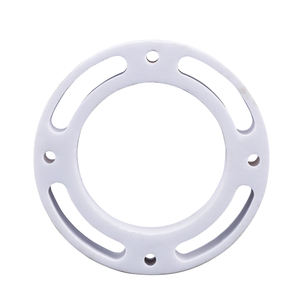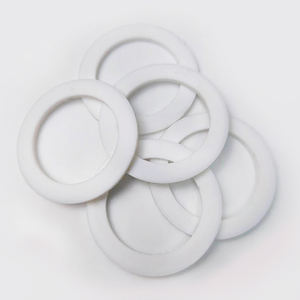1. Material Basics and Architectural Qualities of Alumina Ceramics
1.1 Crystallographic and Compositional Basis of Ī±-Alumina
(Alumina Ceramic Substrates)
Alumina ceramic substrates, mostly composed of aluminum oxide (Al two O ā), serve as the foundation of modern-day digital product packaging due to their outstanding balance of electric insulation, thermal security, mechanical strength, and manufacturability.
The most thermodynamically steady stage of alumina at heats is corundum, or Ī±-Al Two O THREE, which crystallizes in a hexagonal close-packed oxygen lattice with light weight aluminum ions occupying two-thirds of the octahedral interstitial websites.
This thick atomic setup imparts high firmness (Mohs 9), superb wear resistance, and solid chemical inertness, making Ī±-alumina suitable for rough operating environments.
Business substrates normally include 90– 99.8% Al ā O TWO, with minor additions of silica (SiO TWO), magnesia (MgO), or uncommon planet oxides utilized as sintering aids to promote densification and control grain development throughout high-temperature processing.
Greater pureness grades (e.g., 99.5% and above) display exceptional electrical resistivity and thermal conductivity, while reduced pureness versions (90– 96%) supply cost-effective services for less demanding applications.
1.2 Microstructure and Flaw Engineering for Electronic Reliability
The performance of alumina substrates in digital systems is seriously depending on microstructural uniformity and problem reduction.
A fine, equiaxed grain framework– generally ranging from 1 to 10 micrometers– guarantees mechanical integrity and decreases the likelihood of split propagation under thermal or mechanical stress.
Porosity, especially interconnected or surface-connected pores, should be minimized as it degrades both mechanical toughness and dielectric efficiency.
Advanced handling strategies such as tape spreading, isostatic pushing, and controlled sintering in air or controlled environments enable the manufacturing of substrates with near-theoretical density (> 99.5%) and surface area roughness listed below 0.5 Āµm, necessary for thin-film metallization and cord bonding.
Additionally, pollutant partition at grain limits can lead to leakage currents or electrochemical movement under prejudice, demanding stringent control over resources purity and sintering problems to make sure lasting reliability in moist or high-voltage settings.
2. Manufacturing Processes and Substratum Fabrication Technologies
( Alumina Ceramic Substrates)
2.1 Tape Casting and Eco-friendly Body Handling
The production of alumina ceramic substratums starts with the preparation of a highly distributed slurry including submicron Al ā O five powder, organic binders, plasticizers, dispersants, and solvents.
This slurry is refined via tape spreading– a constant approach where the suspension is topped a relocating provider movie using an accuracy physician blade to attain uniform thickness, commonly between 0.1 mm and 1.0 mm.
After solvent evaporation, the resulting “environment-friendly tape” is versatile and can be punched, pierced, or laser-cut to create through holes for upright interconnections.
Multiple layers may be laminated to develop multilayer substrates for complex circuit integration, although the majority of commercial applications utilize single-layer configurations as a result of cost and thermal growth considerations.
The environment-friendly tapes are then thoroughly debound to get rid of natural additives with regulated thermal decay before final sintering.
2.2 Sintering and Metallization for Circuit Assimilation
Sintering is carried out in air at temperatures in between 1550 Ā° C and 1650 Ā° C, where solid-state diffusion drives pore removal and grain coarsening to accomplish complete densification.
The linear shrinkage throughout sintering– usually 15– 20%– should be exactly predicted and compensated for in the design of environment-friendly tapes to guarantee dimensional accuracy of the last substratum.
Following sintering, metallization is applied to create conductive traces, pads, and vias.
2 main methods control: thick-film printing and thin-film deposition.
In thick-film innovation, pastes consisting of metal powders (e.g., tungsten, molybdenum, or silver-palladium alloys) are screen-printed onto the substrate and co-fired in a decreasing environment to create durable, high-adhesion conductors.
For high-density or high-frequency applications, thin-film procedures such as sputtering or dissipation are utilized to deposit attachment layers (e.g., titanium or chromium) adhered to by copper or gold, making it possible for sub-micron pattern by means of photolithography.
Vias are full of conductive pastes and discharged to develop electric interconnections in between layers in multilayer designs.
3. Practical Properties and Performance Metrics in Electronic Solution
3.1 Thermal and Electric Behavior Under Operational Stress
Alumina substratums are prized for their favorable combination of moderate thermal conductivity (20– 35 W/m Ā· K for 96– 99.8% Al Two O FOUR), which enables effective warm dissipation from power gadgets, and high volume resistivity (> 10 Ā¹ā“ Ī© Ā· cm), guaranteeing very little leak current.
Their dielectric consistent (Īµįµ£ ā 9– 10 at 1 MHz) is steady over a wide temperature and frequency variety, making them ideal for high-frequency circuits up to several gigahertz, although lower-Īŗ products like aluminum nitride are favored for mm-wave applications.
The coefficient of thermal growth (CTE) of alumina (~ 6.8– 7.2 ppm/K) is reasonably well-matched to that of silicon (~ 3 ppm/K) and particular product packaging alloys, lowering thermo-mechanical tension during gadget procedure and thermal cycling.
However, the CTE mismatch with silicon remains an issue in flip-chip and direct die-attach setups, typically requiring compliant interposers or underfill products to mitigate tiredness failure.
3.2 Mechanical Toughness and Ecological Durability
Mechanically, alumina substrates display high flexural stamina (300– 400 MPa) and exceptional dimensional stability under tons, enabling their usage in ruggedized electronics for aerospace, vehicle, and industrial control systems.
They are resistant to resonance, shock, and creep at raised temperature levels, keeping architectural integrity as much as 1500 Ā° C in inert ambiences.
In damp atmospheres, high-purity alumina reveals marginal wetness absorption and excellent resistance to ion migration, making sure long-term reliability in outside and high-humidity applications.
Surface hardness also shields against mechanical damages throughout handling and setting up, although care needs to be required to stay clear of side damaging due to fundamental brittleness.
4. Industrial Applications and Technological Effect Across Sectors
4.1 Power Electronics, RF Modules, and Automotive Systems
Alumina ceramic substratums are ubiquitous in power electronic modules, including shielded gate bipolar transistors (IGBTs), MOSFETs, and rectifiers, where they provide electrical seclusion while promoting warm transfer to warmth sinks.
In radio frequency (RF) and microwave circuits, they act as service provider systems for hybrid incorporated circuits (HICs), surface area acoustic wave (SAW) filters, and antenna feed networks as a result of their steady dielectric residential properties and low loss tangent.
In the automobile market, alumina substratums are utilized in engine control devices (ECUs), sensing unit plans, and electrical automobile (EV) power converters, where they withstand high temperatures, thermal cycling, and direct exposure to corrosive liquids.
Their reliability under extreme conditions makes them indispensable for safety-critical systems such as anti-lock stopping (ABDOMINAL) and progressed vehicle driver aid systems (ADAS).
4.2 Medical Tools, Aerospace, and Emerging Micro-Electro-Mechanical Equipments
Beyond customer and commercial electronic devices, alumina substratums are employed in implantable clinical gadgets such as pacemakers and neurostimulators, where hermetic securing and biocompatibility are critical.
In aerospace and defense, they are utilized in avionics, radar systems, and satellite communication components because of their radiation resistance and security in vacuum atmospheres.
Moreover, alumina is progressively used as an architectural and protecting system in micro-electro-mechanical systems (MEMS), including stress sensors, accelerometers, and microfluidic tools, where its chemical inertness and compatibility with thin-film handling are helpful.
As electronic systems remain to demand higher power thickness, miniaturization, and integrity under extreme conditions, alumina ceramic substratums stay a keystone product, bridging the space in between performance, cost, and manufacturability in innovative electronic product packaging.
5. Vendor
Alumina Technology Co., Ltd focus on the research and development, production and sales of aluminum oxide powder, aluminum oxide products, aluminum oxide crucible, etc., serving the electronics, ceramics, chemical and other industries. Since its establishment in 2005, the company has been committed to providing customers with the best products and services. If you are looking for high quality alumina technologies, please feel free to contact us. (nanotrun@yahoo.com)
Tags: Alumina Ceramic Substrates, Alumina Ceramics, alumina
All articles and pictures are from the Internet. If there are any copyright issues, please contact us in time to delete.
Inquiry us

